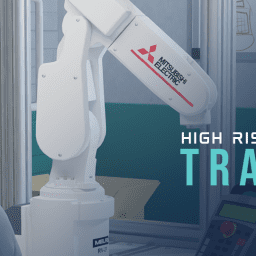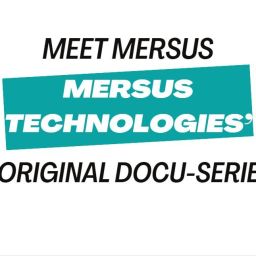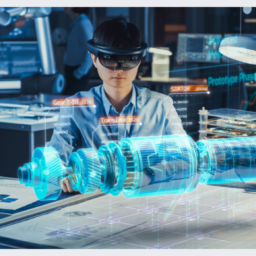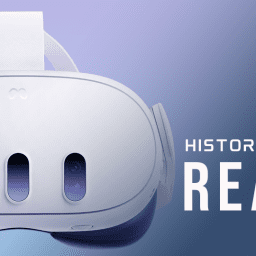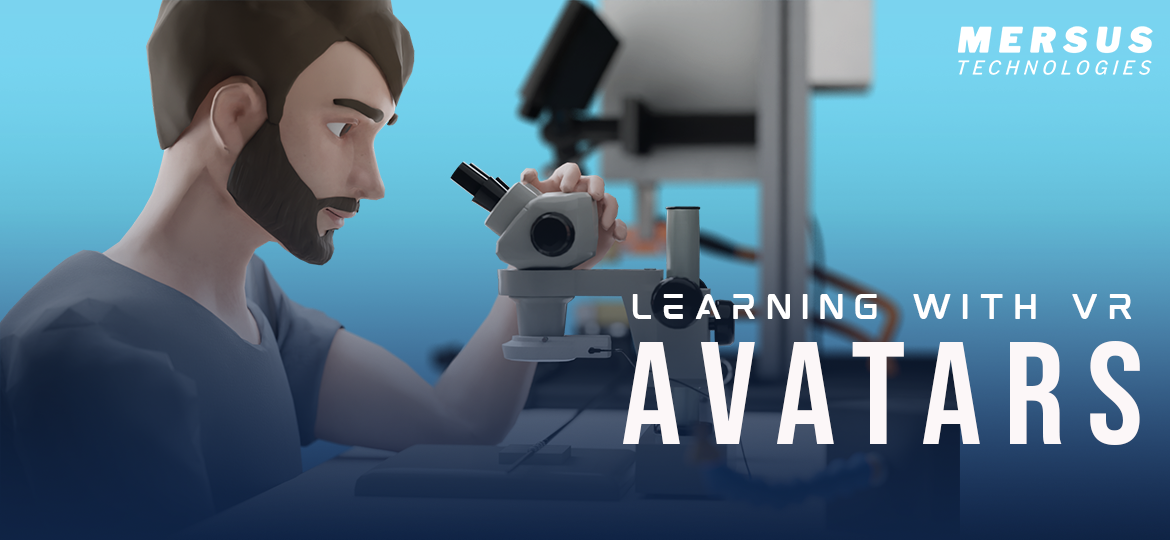
In our weekly blog series, we’ve explored how virtual reality is transforming the landscape of training and workforce development. This week at Mersus Technologies, we turn our focus to one of the most impactful advancements in the space—avatar-based learning. This immersive method allows learners to interact with scenario-driven content through lifelike digital avatars, delivering highly engaging and effective training experiences.
What Is Avatar-Based Learning in VR?
Before exploring the role of avatar-based learning in VR, it’s important to first define what we mean by “avatars.” The term was first used in a technological context in the 1979 PLATO role-playing game Avatar. Since then, it has become widely adopted across digital platforms.
According to the Oxford English Dictionary, an avatar is defined as:
“A graphical representation of a person or character in a computer-generated environment, especially one that represents a user in an interactive game or setting, capable of movement and interaction with others.”
Today, avatars are commonly seen in massively multiplayer online (MMO) games such as World of Warcraft and Final Fantasy XIV, where users control digital characters to interact, collaborate, or compete within immersive virtual environments. In the context of VR training, these avatars are now being leveraged to represent learners and trainers in highly realistic, scenario-based learning experiences.
That hands-on element is precisely what avatar-based learning delivers. Learners aren’t just observing; they are engaging with the environment directly through their avatar. Moreover, avatars introduce a social and emotional dimension to digital learning. In a standard e-learning module, other people are absent or abstract (maybe a profile picture on a forum). In VR, colleagues or instructors appear next to you as avatars, providing human-like interactions. This can mimic the camaraderie and social learning of an in-person classroom or workshop, which traditional digital formats often lack. The result is a training experience that feels more real, interactive, and engaging, bridging the gap between remote learning and face-to-face training.
This is where avatar-based learning in virtual reality truly excels. It merges the immersive qualities of virtual reality with the dynamic capabilities of avatars. Within these simulated environments, employees participate in training scenarios that closely replicate their real-world workspaces. Whether they are practising emergency procedures, refining interpersonal communication, or mastering complex technical tasks, learners can engage safely, repeatedly, and with real-time guidance.
Avatar-Based Learning vs. Traditional Digital Training
Conventional digital learning—such as slide decks, instructional videos, or video conferencing—often struggles to fully engage learners. The experience can be passive, and distractions are ever-present. As one industry expert noted, “E-learning can be full of distractions—a busy inbox is never far from view.”
In contrast, VR-based learning demands full attention. Once a learner puts on a VR headset, they are immersed in a focused, distraction-free environment. This creates a heightened sense of presence—the psychological state of feeling physically present within a virtual space—something traditional 2D platforms cannot replicate.
Another critical difference lies in interactivity. In most online courses, learners may only watch demonstrations or complete simple quizzes. With avatar-based VR, they perform the task themselves. Instead of watching a forklift safety video, for instance, learners can operate a virtual forklift in a simulated warehouse. This hands-on approach not only reinforces muscle memory but also makes the experience far more memorable and impactful.
As one training specialist put it, “You can watch a video or read manuals all day, but it’s not the same as standing in front of machinery, handling the tools, and receiving real-time feedback.” Avatar-based learning delivers exactly that—placing learners at the centre of the action.
In addition, avatars introduce an important social dimension to learning. In standard digital formats, peer or instructor interaction is limited, often reduced to static icons or chat functions. In VR, learners interact with life-like avatars that simulate natural body language, voice, and presence. This fosters the kind of collaborative learning and social connection typically reserved for in-person training.
The result is a learning experience that feels realistic, engaging, and deeply human, bridging the gap between digital delivery and real-world training environments.
The Learning Science Behind Why Avatar-Based Learning Works
The effectiveness of avatar-based learning in virtual reality is grounded in well-established learning science principles. Core factors such as social presence, experiential learning, and cognitive load management contribute to its ability to accelerate learning, improve retention, and enhance learner engagement.
Social Presence: Learning Together in Shared Virtual Spaces
Social presence is the sense of being physically and emotionally connected to others in a virtual space. In avatar-based learning, this principle comes to life as learners interact with lifelike avatars representing peers, instructors, or themselves. This fosters a sense of togetherness that boosts motivation and engagement.
Research published in Frontiers in Psychology defines social presence as the perception of “being there” with others, which significantly improves collaborative learning outcomes. Learners in VR can interpret body language, hear spatial audio cues, and engage in real-time conversations—mimicking real-world dynamics.
A PwC study on VR training found that participants felt 3.75 times more emotionally connected to the content than traditional classroom learners. This emotional engagement creates a safer space for practicing skills, especially in sensitive areas like leadership, public speaking, and diversity training. Learners feel less self-conscious interacting through avatars, which act as a psychological buffer, encouraging active participation and experimentation.

Meta Quest Avatars: Aiding The Social Science For VR
Experiential Learning: Learning by Doing
Avatar-based learning is closely aligned with experiential learning theory, which asserts that people learn more effectively through direct experience. In VR, learners don’t just watch a process—they participate in it. This could mean assembling a virtual machine, navigating an emergency scenario, or conducting a customer service interaction.
As highlighted in Training Magazine, hands-on practice in VR allows learners to fail safely and repeat tasks until mastery is achieved. A notable example is the U.S. Army’s helicopter mechanic programme, where VR training reduced the learning period from 18 weeks to just 10 by allowing recruits to interact with virtual equipment in simulated environments.
Experiential learning through avatars also improves long-term memory retention. At the Miami Children’s Health System, VR-trained medical staff retained 80% of their training after one year, compared to just 20% retention after one week using traditional methods. These immersive, scenario-based exercises lead to lasting understanding, making VR a powerful tool for both technical and soft skill development.
Cognitive Load: Focused, Efficient Learning
Cognitive load theory refers to the mental effort required to learn new information. If learning is overly complex or poorly structured, it can overwhelm learners. Avatar-led VR training reduces this risk by creating intuitive, immersive environments that minimise distraction and support focused engagement.
VR naturally draws the learner’s attention, eliminating interruptions common in traditional settings (like notifications or multitasking). In PwC’s study, VR learners were found to be four times more focused than those using e-learning, and 1.5 times more focused than classroom learners.
VR also alleviates the mental strain of visualising abstract tasks. For instance, instead of mentally picturing how machinery operates based on a manual, learners in VR can interact directly with a 3D model. This reduces extraneous cognitive load and enhances germane load—the mental effort dedicated to understanding the material.
However, VR must be well-designed. Overly detailed environments without instructional focus can lead to distraction. A study published by the NIH found that cluttered 360° visuals increased extraneous cognitive load, potentially undermining learning outcomes. The solution lies in purposeful design—highlighting key cues and streamlining scenarios to support learning objectives.
We apply this methodology in our own platform, Avatar Academy. By downloading the app on the Meta Quest Store and exploring the Fuse tutorial, you’ll experience firsthand how purposeful design, intuitive cues, and a streamlined interface come together to create an effective, user-focused learning environment.
Accenture’s Global VR Onboarding (Workforce Integration)
It’s not just training scenarios – companies are also using avatars in VR to improve onboarding and team integration. Consulting firm Accenture recently made headlines by deploying 60,000 VR headsets for employee training and onboarding.
New hires at Accenture use VR to enter a virtual “One Accenture Park” world, where they interact with colleagues’ avatars, learn about company culture, and even practice tasks together. Accenture’s leadership noted that this immersive approach helps build connections through shared experiences with people you can’t be in a room with (a key concern in remote/hybrid work)
The move by a company to invest in VR at such scale signals strong confidence in the medium. Early results have shown improved new hire engagement and faster integration into teams. For HR, this points to avatar-based environments being powerful for not just skill training, but also for fostering company culture and collaboration in an era where distributed workforces are common.
Final Thoughts
Avatar-based learning in VR is no longer a futuristic concept—it’s a proven, science-backed approach that is reshaping modern workforce training. Unlike traditional digital methods, it delivers immersive, interactive experiences that lead to stronger engagement, higher retention, and real-world skill application. By harnessing the power of social presence, experiential learning, and focused design, it addresses long-standing challenges in L&D with measurable results.
At Mersus Technologies, we specialise in crafting tailored VR training solutions that align with each client’s unique operational needs. Our approach blends realism, interactivity, and performance insights to deliver impactful, scalable learning experiences that drive lasting improvement.
Sound interesting? Contact us today!
